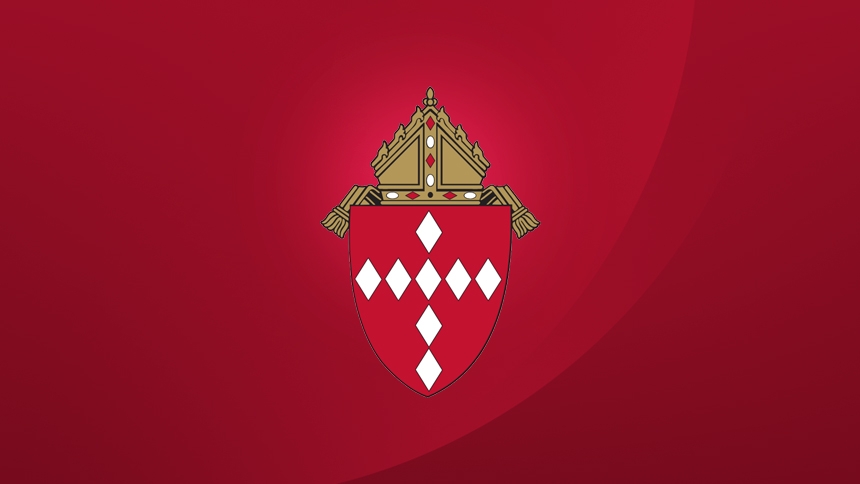
The church was consumed in the flames. It was early morning on Jan. 11, 2014. According to police, a man had driven his SUV onto church grounds, crashed and set fire to St. Luke the Evangelist Church in Raleigh.
Only one sacred object was found among the ashes: the tabernacle.
While tragedy forced the parish to rebuild, it was healing that resonated more than three years later as the community came together to commemorate a new church building.
Bishop Luis Rafael Zarama dedicated the church Oct. 21, and reminded the faithful that the day invited them to discover something beautiful. “From tears to joy … how things change from frustration, from pain, from being unable to understand,” he said. “[It] awakened in you, the community, the need to build something from the ashes.”
The ashes from the horrible January event hadn’t even been cleared away when services were moved to St. Luke’s social hall, and discussions began to plan the way forward. Less than two years later, Bishop Michael F. Burbidge, Father Robert Staley and Deacon Mike Sanchez, broke ground for a new structure.
“We wanted something that was traditional and also glorious … something beautiful that would inspire people,” said Father Staley.
According to Jane Turro, parish accountant and director of facilities, people embraced the idea of a cruciform, or cross, shape for the new church. While the shape and proportions of the new St. Luke Church echo those of 3rd century European church architecture, the interior is modern in a way that leads a worshiper’s eye to the hand-cut, Italian marble altar. The Stations of the Cross are three-dimensional and hand-carved. They were richly painted by craftsmen in Oberammergau, Germany.
“One of the most treasured things in the old church, was [a set of] four stained glass windows that were scenes depicted only in St. Luke’s Gospel, for example, the Prodigal Son,” said Father Staley, who noted that those windows were irreparably damaged in the fire.
The community carried over those four scenes into the new church, but redone by a new artist.
“We wanted to not just replace what we had. We wanted to move forward,” he said. “So we have two more scenes only depicted in St. Luke’s Gospel that are in the nave of the church.”
In his homily, Bishop Zarama noted how it was pain that brought the community together. “You’d never imagine in your entire life that this church would be possible after the fire,” he said. “How God, in that mysterious way, was able to do that and awake not our frustration, but change it to hope.”
Perhaps the greatest hurdle in construction was also the most remarkable. As builders excavated for the new church’s foundation, their backhoe uncovered a “rock.” That rock, after much digging, revealed itself to be a granite outcrop, common to the geology of North Carolina. It proved to be too large to be excavated. Its full size remains unknown. Excavators had to chip away the rock’s pinnacle. The massive stone remains unseen, lying almost directly under the altar.
Recalling the day that the obstacle was conquered, Father Staley quoted Matthew 16:18-19: “And so I say to you, you are Peter, and upon this rock I will build my church, and the gates of the netherworld shall not prevail against it. I will give you the keys to the kingdom of heaven. Whatever you bind on earth shall be bound in heaven; and whatever you loose on earth shall be loosed in heaven.”
As Saturday’s dedication ceremony and Mass began outside under bright sunshine, the builders handed the keys to the new church to Bishop Zarama, who in turn gave them to Father Staley. Led by a Knights of Columbus color guard, everyone processed through the doors for the first time together.
“God is love. And that is why you’re here, always looking to find the meaning of life. The meaning of life is love,” Bishop Zarama told congregants. “And look at that, what love heals with sacrifice! Thanks to God for all of that. Thanks to God for this beautiful day and this beautiful church.”

